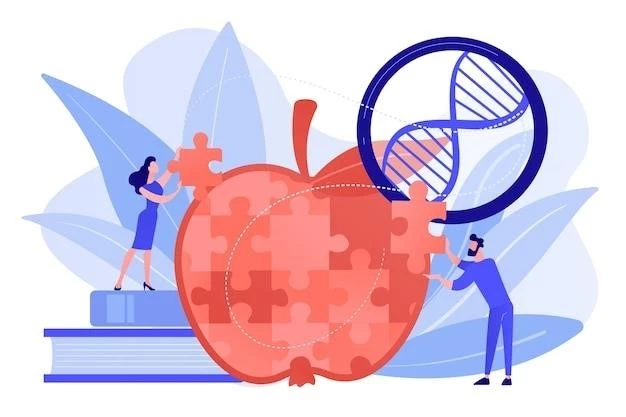Introduction
Overhydrated hereditary stomatocytosis (OHSt) is a rare disorder involving red blood cell membrane permeability to monovalent cations, clinically characterized by hemolytic anemia․ The condition is associated with an increased membrane permeability to monovalent cations and altered intracellular concentration of sodium and potassium ions․
Definition and Background
Overhydrated hereditary stomatocytosis (OHSt) is a rare genetic disorder characterized by altered red blood cell morphology and increased membrane permeability to monovalent cations․ The condition is distinct from other forms of stomatocytosis, such as dehydrated hereditary stomatocytosis․ OHSt presents with hemolytic anemia and various clinical manifestations related to abnormal ion concentrations within the red blood cells․
Clinical Features
Overhydrated Hereditary Stomatocytosis (OHSt) presents as a hemolytic anemia characterized by macrocytosis and altered red blood cell morphology․ The condition manifests with variable symptoms, including anemia requiring transfusions, iron overload, and reduced osmotic resistance․ Patients may experience fatigue, jaundice, and other complications related to abnormal cellular hydration and ion concentrations․
Characteristics of Overhydrated Hereditary Stomatocytosis
Overhydrated Hereditary Stomatocytosis (OHSt) is a rare condition characterized by altered red blood cell morphology with slit-like lucencies (stomata)․ The red cells in OHSt show increased cation leak, leading to elevated sodium and reduced potassium levels․ Genetic mutations, including those in Rh-associated glycoprotein (RhAG), play a critical role in the pathogenesis of OHSt․ Diagnosis involves specialized testing to identify the unique cellular alterations associated with the disease․
Variability in Presentation
Overhydrated Hereditary Stomatocytosis (OHSt) exhibits a variably compensated macrocytic hemolytic anemia with fluctuating severity․ The condition is characterized by circulating erythrocytes with slit-like lucencies (stomata) visible on peripheral blood smears․ OHSt red cells display cation leak, resulting in elevated cell Na content and reduced K content; The fluctuating nature of symptoms in OHSt poses challenges in diagnosis and management․
Genetic Basis
The genetic basis of Overhydrated Hereditary Stomatocytosis (OHSt) is associated with mutations in genes affecting red blood cell membrane permeability to monovalent cations, particularly Rh-associated glycoprotein (RhAG)․ These mutations lead to altered ion concentrations within red blood cells, contributing to the pathogenesis of OHSt․ Understanding these genetic factors is essential for diagnosis and management of the condition․
Impact of Genetic Mutations
Gene mutations play a crucial role in the development and manifestation of Overhydrated Hereditary Stomatocytosis (OHSt), particularly in genes like Rh-associated glycoprotein (RhAG)․ These mutations lead to abnormal red blood cell membrane permeability, affecting ion concentrations and contributing to the pathophysiology of OHSt․ Understanding the impact of these genetic alterations is essential for diagnosis, treatment, and genetic counseling․
Role of Rh-associated Glycoprotein (RhAG)
Rh-associated glycoprotein (RhAG) plays a significant role in Overhydrated Hereditary Stomatocytosis (OHSt) as mutations in RhAG have been associated with this condition․ Research indicates that alterations in RhAG lead to increased cation leakage in red blood cells, contributing to the pathophysiology of OHSt․ Understanding the involvement of RhAG in OHSt is crucial for advancing diagnostic and therapeutic strategies․

Diagnosis
Diagnosing Overhydrated Hereditary Stomatocytosis (OHSt) involves specialized techniques to identify abnormalities in red blood cell morphology and membrane permeability to monovalent cations․ Genetic testing plays a crucial role in confirming the presence of mutations associated with OHSt, aiding in accurate diagnosis and personalized treatment strategies․
Diagnostic Techniques
Diagnosing Overhydrated Hereditary Stomatocytosis (OHSt) involves specialized techniques that assess red blood cell morphology and membrane properties․ Diagnostic methods include osmotic gradient ektacytometry, genetic testing to identify mutations related to cation leaks in red blood cells, and careful evaluation of clinical symptoms and blood tests․ These techniques help in accurate identification and management of OHSt patients․
Importance of Genetic Testing
Genetic testing plays a vital role in the diagnosis of Overhydrated Hereditary Stomatocytosis (OHSt) by identifying specific mutations associated with the condition․ Understanding the genetic basis of OHSt through testing helps in confirming the diagnosis, predicting disease progression, and enabling personalized treatment strategies based on the individual’s genetic profile․
Treatment
Management strategies for Overhydrated Hereditary Stomatocytosis (OHSt) involve comprehensive approaches to address hemolytic anemia, complications, and abnormal ion concentrations․ Therapeutic interventions focus on supportive care, blood transfusions as needed, iron overload management, and maintaining overall health․ Individualized treatment plans are essential to mitigate symptoms and improve patient outcomes․
Management Strategies
The management of Overhydrated Hereditary Stomatocytosis (OHSt) involves a multifaceted approach focusing on addressing hemolytic anemia, abnormal ion concentrations, and associated complications․ Therapeutic strategies aim to support patients through blood transfusions as necessary, iron overload management, and overall health maintenance․ Tailored management plans are essential to optimize patient care and well-being․
Therapeutic Approaches
Treating Overhydrated Hereditary Stomatocytosis (OHSt) involves managing hemolytic anemia through supportive measures and occasional blood transfusions․ Additionally, addressing iron overload and maintaining overall health are crucial aspects of the therapy․ Personalized treatment plans are essential to alleviate symptoms and improve the quality of life for individuals with OHSt․

Prognosis
For individuals diagnosed with Overhydrated Hereditary Stomatocytosis (OHSt), the long-term outlook varies based on the severity of symptoms and the individual’s response to treatment․ While OHSt is a rare disorder with challenges in diagnosis and management, personalized treatment plans and close monitoring can help improve prognosis and quality of life for affected individuals․
Long-Term Outlook
For individuals with Overhydrated Hereditary Stomatocytosis (OHSt), the long-term prognosis varies depending on the severity of symptoms and the response to treatment․ With personalized management plans and close monitoring, patients can experience improved quality of life despite the challenges associated with this rare disorder․
Complications and Challenges
Individuals with Overhydrated Hereditary Stomatocytosis (OHSt) face potential complications related to hemolytic anemia, abnormal ion concentrations, and associated symptoms․ Challenges in diagnosing and managing this rare disorder include accurate identification, personalized treatment plans, and addressing the impact of genetic mutations on disease progression․ Close monitoring and multidisciplinary care are essential to navigate the complexities of OHSt successfully․
